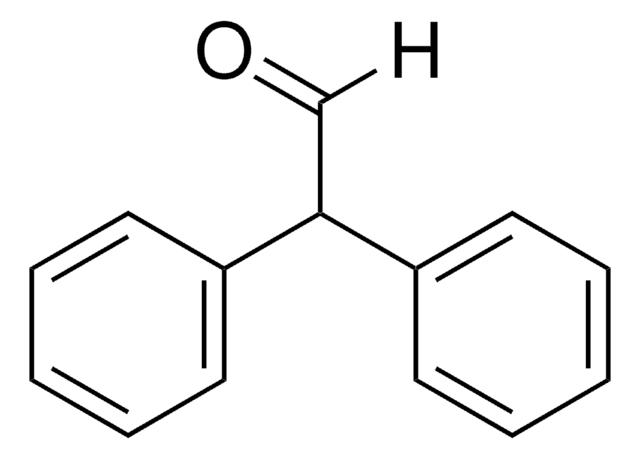107395
Phenylacetaldehyde
≥90%
Synonyme(s) :
α-Tolyaldehyde
About This Item
Produits recommandés
Pureté
≥90%
Indice de réfraction
n20/D 1.535 (lit.)
Point d'ébullition
195 °C
Pf
−10 °C (lit.)
Solubilité
H2O: slightly soluble
alcohol: soluble
diethyl ether: soluble
Densité
1.027 g/mL at 25 °C
Température de stockage
2-8°C
Chaîne SMILES
O=CCc1ccccc1
InChI
1S/C8H8O/c9-7-6-8-4-2-1-3-5-8/h1-5,7H,6H2
Clé InChI
DTUQWGWMVIHBKE-UHFFFAOYSA-N
Vous recherchez des produits similaires ? Visite Guide de comparaison des produits
Catégories apparentées
Application
Actions biochimiques/physiologiques
Autres remarques
Mention d'avertissement
Danger
Mentions de danger
Conseils de prudence
Classification des risques
Acute Tox. 4 Oral - Aquatic Chronic 3 - Eye Dam. 1 - Skin Corr. 1B - Skin Sens. 1A
Code de la classe de stockage
8A - Combustible corrosive hazardous materials
Classe de danger pour l'eau (WGK)
WGK 1
Point d'éclair (°F)
154.4 °F - (External MSDS)
Point d'éclair (°C)
68 °C - (External MSDS)
Équipement de protection individuelle
Eyeshields, Faceshields, Gloves, type ABEK (EN14387) respirator filter
Certificats d'analyse (COA)
Recherchez un Certificats d'analyse (COA) en saisissant le numéro de lot du produit. Les numéros de lot figurent sur l'étiquette du produit après les mots "Lot" ou "Batch".
Déjà en possession de ce produit ?
Retrouvez la documentation relative aux produits que vous avez récemment achetés dans la Bibliothèque de documents.
Notre équipe de scientifiques dispose d'une expérience dans tous les secteurs de la recherche, notamment en sciences de la vie, science des matériaux, synthèse chimique, chromatographie, analyse et dans de nombreux autres domaines..
Contacter notre Service technique









